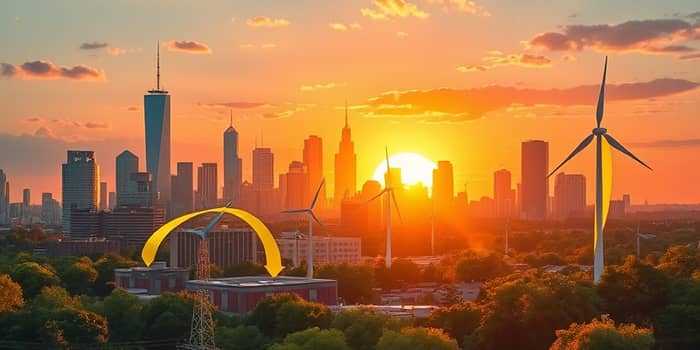
As the world pivots towards a lower-carbon and more sustainable economy, financial markets are innovating instruments that align profit with purpose. Green bonds stand at the forefront of this transformation, channeling capital into projects that deliver measurable environmental benefits.
In this comprehensive article, we explore how green bonds have grown, the drivers behind their adoption, their mechanics compared to traditional bonds, sector distributions, investor dynamics, challenges, and the next frontiers beyond green bonds.
Since their inception, green bonds have expanded into a robust market segment, underpinned by growing awareness of climate change and stricter regulatory frameworks. From renewable energy to sustainable buildings, issuers and investors are increasingly drawn to these instruments.
Global issuance surged as policymakers and institutional investors recognized the critical role of climate finance in meeting net-zero targets. The transparency and accountability built into the green bond framework have fostered increased investor confidence and trust, fueling further growth.
The green bond market has witnessed exponential expansion in recent years. By Q1 2025, outstanding green bonds reached an impressive $2.9 trillion globally, marking a 10% increase since 2023. Projections for full-year 2025 issuance range between $620 billion and $673.12 billion.
These figures represent roughly 58–68% of all sustainable bonds issued in 2025, making green bonds the dominant segment of the sustainable debt universe. In total, cumulative sustainable debt (including green, social, sustainability, and sustainability-linked bonds) exceeds $6 trillion by mid-2025.
Several forces are propelling the green bond market to new heights:
Public sector involvement, including partnerships with the World Bank and African Development Bank, has directed over $3 billion in green bond financing towards climate-vulnerable regions.
At their core, green bonds mirror conventional bonds in promising principal repayment and periodic interest. What distinguishes them is the earmarked use of proceeds for environmental projects and rigorous reporting requirements.
Yields on green bonds in 2025 hover around 2–2.5%, often slightly lower than traditional equivalents due to the so-called “greenium” effect. Many investors accept reduced returns in exchange for demonstrable sustainable impact.
Empirical studies suggest green bond issuance can lower borrowing costs for issuers and offer lower volatility in bond portfolios, enhancing their defensive qualities during market turbulence. Enhanced disclosure and third-party verification further mitigate information asymmetry.
Global green bond proceeds in 2025 are allocated across diverse sectors:
Corporate issuers account for roughly half of the market, while sovereign green bonds surpassed $37.7 billion in issuance by Q2 2025. Emerging niches, such as blue bonds for marine conservation ($7.2 billion cumulatively) and transition bonds for decarbonizing hard-to-abate industries, are gaining traction.
Institutional allocations to green bonds reached $300 billion under stricter ESG mandates in 2025, with pension funds and insurers representing 25% of total investment. About 70% of portfolio managers plan to elevate green bond holdings further.
The secondary market remains active, trading approximately $90 billion in green bonds during 2025. Robust liquidity and a growing investor base underscore the asset class’s resilience even amid challenging macroeconomic conditions.
Green bonds have demonstrated similar or superior risk-adjusted returns compared to their traditional counterparts, along with lower price volatility. Nonetheless, studies diverge on the exact size of the greenium, reflecting variation across issuers, credit ratings, and geographic markets.
Key challenges persist:
As the sustainable debt market evolves, new instruments complement traditional green bonds. Sustainability-linked bonds tie coupon rates to achieving pre-defined ESG targets, while blue bonds fund ocean health initiatives.
Transition bonds, though still nascent, support heavy industries in reducing emissions. Meanwhile, advanced impact metrics—such as carbon savings per dollar invested—are emerging to enhance transparency and align financial returns with environmental outcomes.
Regulations like the EU Sustainable Finance Disclosure Regulation (SFDR) and forthcoming global taxonomies aim to harmonize definitions, improve disclosure, and curb greenwashing. Investors benefit from more consistent impact reporting, which fosters market integrity and accelerates capital flows to genuine green projects.
The global green economy reached $7.9 trillion by Q1 2025, accounting for 8.6% of listed equity markets. With sustainable debt issuance expected to grow, the focus will likely shift towards:
• Integrating climate risk into mainstream credit analysis.
• Scaling impact measurement tools and harmonizing standards.
• Expanding blue and transition bond frameworks to address biodiversity and hard-to-abate sectors.
Ultimately, the evolution of green bonds and their successors will hinge on maintaining robust governance and transparent impact tracking, ensuring capital markets play a pivotal role in financing a sustainable future.
In a world racing against climate change, green bonds and their innovative successors stand as powerful tools to unlock capital for a resilient, equitable, and low-carbon future. By embracing rigorous standards, fostering market transparency, and championing new instruments, stakeholders can ensure that finance truly serves the planet.
References





